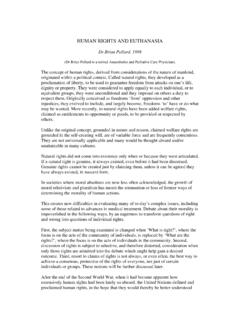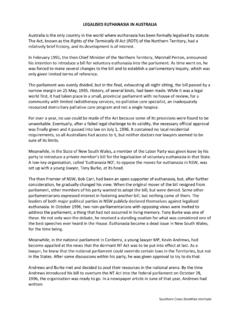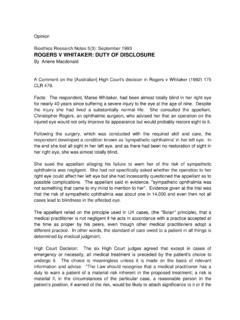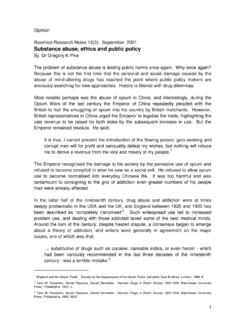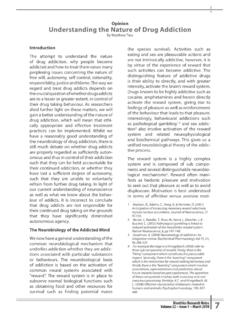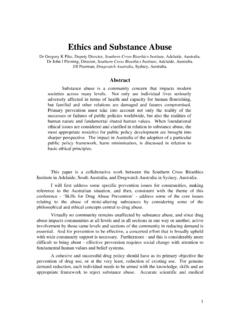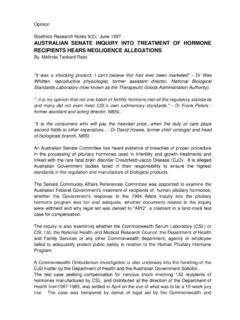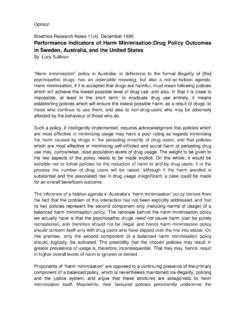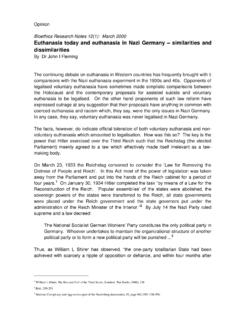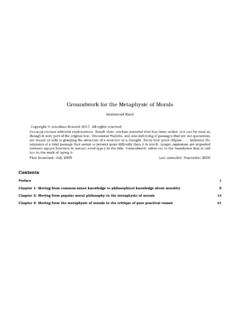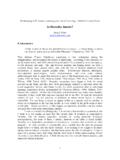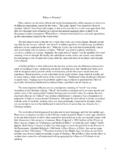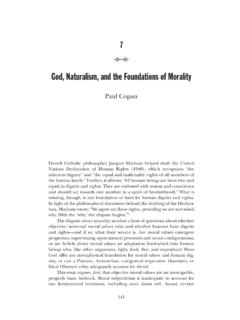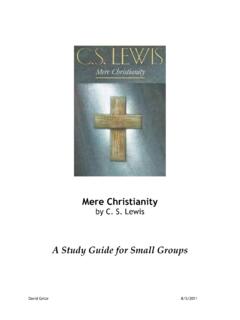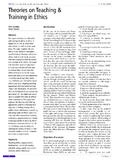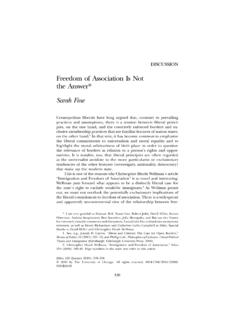Transcription of Opinion Bioethics Research Notes 17(1): March …
1 Opinion Bioethics Research Notes 17(1): March 2005 Are Some People nuts ? refuting an inappropriate Argument from Analogy By Zac Alstin In her famous paper A Defense of Abortion Judith Thomson presented the following brief argument against the claim that an embryo is a human being from conception. For the purposes of this paper, I will use the term embryo rather than Thomson s preferred fetus or the technically incorrect fertilized ovum . Most opposition to abortion relies on the premise that the fetus is a human being, a person, from the moment of conception. The premise is argued for, but, as I think, not well.
2 Take, for example, the most common argument. We are asked to notice that the development of a human being from conception through birth into childhood is continuous; then it is said that to draw a line, to choose a point in this development and say before this point the thing is not a person, after this point it is a person is to make an arbitrary choice, a choice for which in the nature of things no good reason can be given. It is concluded that the fetus is, or anyway we had better say it is, a person from the moment of conception. But this conclusion does not follow. Similar things might be said about the development of an acorn into an oak tree, and it does not follow that acorns are oak trees or that we had better say they are.
3 1 ..I think that the premise is false, that the fetus is not a person from the moment of conception. A newly fertilized ovum, a newly implanted clump of cells, is no more a person than an acorn is an oak tree. 2 Thomson s argument is clearly an argument from analogy, yet it is not phrased in a consistent way. In fact, Thomson s phrasing of this argument is one of the reasons why it initially appears convincing. Thomson s paper uses ambiguous language and the conflation of terms to turn a straightforward yet unconvincing argument into something that captures the imagination of participants on both sides of the abortion debate.
4 The analogy is presented in a confused form , trailing after the presentation of a particular pro-life argument. This discourages more careful analysis of the analogy, which would undoubtedly show up its weaknesses. The general argument opens with a conflation of two of the most important terms: 1 Thomson, J. J. A Defense of Abortion in LaFollette, H. (ed). Ethics in Practice: An Anthology 2nd Edition. Blackwell Publishers Ltd. Oxford. 2002. p 63. 2 ibid. Most opposition to abortion relies on the premise that the fetus is a human being, a person, from the moment of conception Human being is a biological category that includes any member of the human species.
5 Person is an ambiguous philosophical category that attempts to redefine the basis of moral significance. How much these two categories intersect with each other depends on how the term person is defined. According to the pro-life definition, any human being is also a person since being human is the sole qualifier of such moral categories. This is the definition of person that Thomson implies when she treats the terms person and human being synonymously. (Other philosophers have given definitions of person that exclude human beings with limited functions, and even include some non-human animals.)
6 If all human beings are persons, and all embryos are human beings from conception, then it follows that all embryos are also persons from conception. Yet Thomson somehow reaches the opposite conclusion. From her conclusion we can see that Thomson must in fact be dealing with a different, but unspecified definition of person. Thomson cannot deny that embryos are human beings from conception as this is an established scientific fact; hence she must have at some point rejected the premise that all human beings are persons, to support her conclusion that embryos are not persons from conception. But Thomson does not openly deviate from her original conflation of human being and person, which seemed to endorse the pro-life definition.
7 There is in fact more than one concept of person at work in Thomson s argument one that includes embryos, and one that excludes embryos as we shall see later, yet the reader is not alerted to this. Lacking any definition beyond the conflation of person and human being the reader is left with such an ambiguous concept of person that the argument seems plausible. Furthermore, the conflation of person and human being is reinforced at a third point in Thomson s paper, with the use of the term human person .3 This conflation adds to Thomson s conclusion the implication that since the embryo is not a person, it also is not a human being.
8 This is all made possible because of the particular pro-life argument that Thomson chose to use. Using this argument means that Thomson can avoid directly confronting both the fact that embryos are human beings from conception, and the pro-life premise that all human beings are persons. She even avoids offering an alternative concept of personhood. Instead, she is able to offer a highly convincing argument from analogy that seems to disprove the claim that embryos are persons from conception, without getting into any of the difficult details of addressing the real basis of the pro-life position respect for the sanctity of human life.
9 3 ibid We have touched on the ambiguity of Thomson s argument, and now we will see what is wrong with the argument itself. Thomson s argument from analogy contains an example of ambiguous phrasing that is indispensable to its apparent success: We are asked to notice that the development of a human being from conception through birth into childhood is continuous The phrase development of a human being is ambiguous because it leaves us uncertain of whether Thomson is referring to the development of something non-human into a human being, or the continual development of something already human.
10 The uncertainty is vital, since clarity could either render Thomson s argument untenable or meaningless. In the context of this pro-life argument briefly mentioned by Thomson, we would naturally be inclined to assume that development of a human being refers to the continual development of something already human. This suits Thomson s purposes in the construction of her counter-argument her argument from analogy. By tacking her counter-argument analogy onto the end of a pro-life argument, Thomson avoids having to clarify her first premise, avoids having to explicitly claim that an embryo develops into a person.
